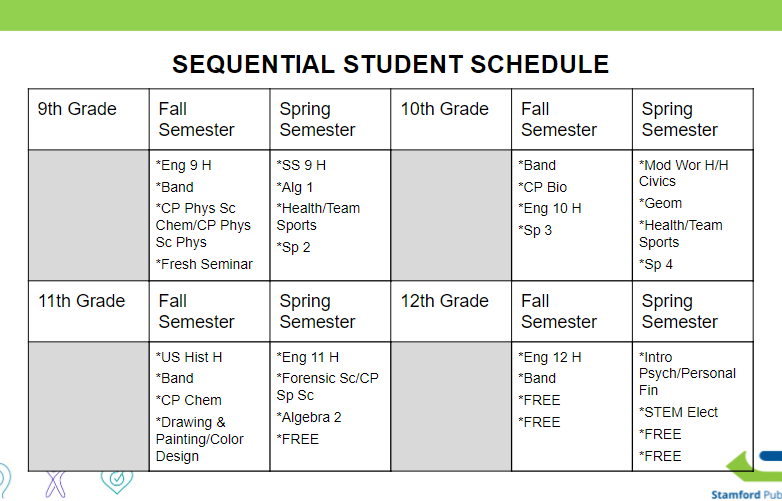New Schedule Change Receives Mixed Feedback
January 14, 2022
The debate over a schedule change in high schools has been going on for several years. In 2020, the plan for Stamford High and Westhill was for them to implement a new block schedule system where students would go to four classes each day for 85 minutes each. The next day, they would go to their other four classes and continue alternating. Due to the ongoing Covid-19 pandemic, both schools decided to continue with a seven-period day with no alternating classes.
On January 12, the Board of Education held a meeting in which they discussed their plans to start a 4×4 class schedule. With this, students would attend four classes per day for 90 minutes each. The difference between this and the original block schedule though is that instead of alternating classes every other day, students would remain in the same four classes for the first semester and then start their new four classes the second semester. In total, students would take eight classes at the end of the year.
Further explaining this scheduling, Associate Superintendent Amy Beldotti updated the BOE during a meeting. In this, she showed a presentation that outlined their thought process behind the decision. The presentation said that this schedule would improve the school climate and culture and reduce transition time in the hallways. Additionally, the presentation outlined their reasoning for the change, saying that it “allows for longer blocks of instructional time for students (90 minutes versus 48 minutes)” and “supports [their] Career Pathways initiative: internships, workplace learning for students, pre-apprenticeships, etc.”
Despite this reasoning, concerned teachers and students still shared their opinions on the original block schedule and this new plan. One such concern is that starting with the class of 2023, students have to have 25 credits to graduate instead of 20 like the class of 2022. To ensure that as many students as possible meet this requirement, many believe that a new schedule is the most effective way to do this. Others however argue that these longer classes will cause a decrease in student engagement, as well as various other negative effects.
On January 12, AITE student Kimberly McGowan sent an email to all Stamford Public School students outlinining her concerns over this change. She says that “It will make it harder for us to learn, it makes it even tougher to take AP classes, and it worsens our mental health.” Along with her expressed concerns, McGowan also set up a petition which has gathered over 1,300 signatures so far. Like McGowan, several other students feel the same way. Allison Yakubovich, a junior at Stamford High, says “The A/B schedule works at AITE and kids like it. And kids like the schedule the way it is now at Stamford High and Westhill. Why fix what’s not broken? It sets AP students up for failure on the exams. It’s unnecessary and counterproductive.”
Teachers also are expressing their concerns over this change. In an anonymous discussion, teachers were able to comment and ask questions about the schedule. Some of the most popular questions were about how students would remain focused for the whole period and what would be done to ensure that AP students are prepared for their exams. While not all questions were answered, teachers were still provided a place to ask away.
Although the Board of Education (BOE) has been receiving lots of feedback in response to this new scheduling approach , the BOE President, Jackie Heftman, shared how the superintendent has authority over the schedule, not the BOE. The switch to the 4×4 schedule is planned to start fall of 2022. There are still kinks to work out and many are still expressing their opinions in the hope to stop this change. There will be a workshop held by the Board on March 1 to further continue discussing the topic. In the meantime, the High School Call to Action committee plans to continue meeting and working on implementation to prepare for the transition.














